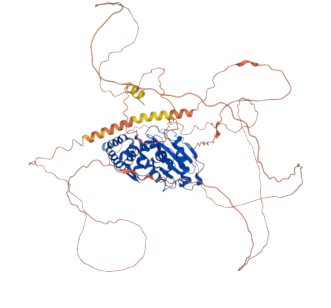NASA Identifies Ideal Martian Location for Future Human Settlements

NASA's Mars Reconnaissance Orbiter has revealed a promising location for future human settlements on Mars, according to a study led by Dr. Erica Luzzi, a planetary geologist at the University of Mississippi. The findings, published in the Journal of Geophysical Research Planets on June 25, 2025, indicate that a region in Mars' mid-latitudes, specifically Amazonis Planitia, may contain shallow ice beneath the surface, offering a crucial water source for upcoming astronauts.
As human missions to Mars become a reality, access to water will be vital not only for drinking and agriculture but also for producing rocket fuel for the return journey to Earth. The study's findings highlight the potential for in situ resource utilization (ISRU), which emphasizes the use of local resources to support human life and operations on Mars, thereby reducing the costs associated with transporting water from Earth.
Dr. Luzzi and her team utilized high-resolution imagery from the HiRISE camera aboard the Mars Reconnaissance Orbiter to analyze the geological features of Amazonis Planitia. Their observations included fresh-looking craters, polygonal fracture patterns, and other indicators of ground ice, suggesting the presence of ice just below the surface. This discovery is particularly significant because it is located in a climatic sweet spot that receives adequate sunlight and maintains cooler temperatures, which are essential for ice preservation.
The implications of this study extend beyond logistical considerations for human survival on Mars. The presence of ice may also provide insights into the planet's history and potential for past life. "Ice can preserve biomarkers of past life and host microbial populations, potentially revealing whether Mars was ever habitable," Dr. Luzzi noted.
According to Giacomo Nodjoumi, an expert at the Italian Space Agency, the logistics of a Mars mission present unique challenges. Unlike lunar missions, which allow for relatively quick resupply from Earth, missions to Mars will require astronauts to be self-sufficient for extended periods due to the long duration of travel. "The most important resources are oxygen to breathe and water to drink. That’s what makes our candidate landing site really promising," Nodjoumi stated.
Before human explorers can verify these findings, robotic missions will need to assess the ice deposits. Dr. Luzzi suggests using radar techniques to analyze the thickness and distribution of the buried ice. Future missions equipped with drills and spectrometers will be essential for direct sampling and analysis of the Martian soil and ice.
The study not only sheds light on the potential for human habitation on Mars but also reinforces the notion that the planet is far from being a barren wasteland. Beneath its dusty surface lies the potential for vital resources, as well as clues to the planet's past. As mission planners refine their strategies, Amazonis Planitia has emerged as a key candidate for future exploration, marking a significant step toward humanity's goal of settling on the Red Planet.
Advertisement
Tags
Advertisement





